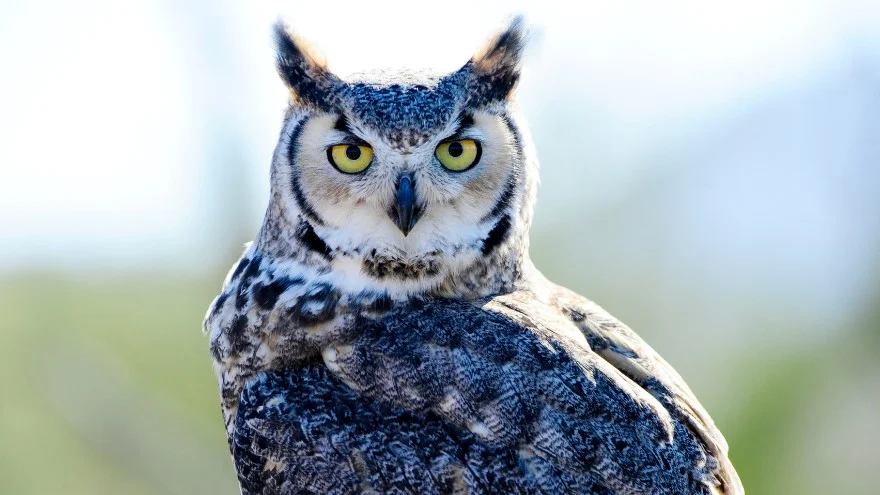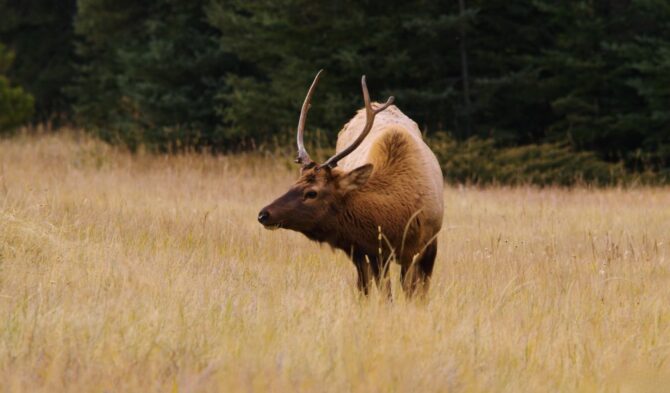The state of Georgia is located in the southwestern part of the United States, and it is bordered by other states like Tennessee, North Carolina, South Carolina, Florida, and Alabama.
Georgia has an environment that’s conducive for animals, including forested areas. The state, therefore, boasts of diverse wildlife, amongst which we have owls.
There are nine species of owls in Georgia, each with its traits and behaviors. Some species can be found around Georgia all year, while others migrate in some seasons. Examples are the snowy owl, barn owl, eastern screech, and burrowing owl.
Read on to learn more about these intelligent birds and also facts on how to recognize the different species based on their appearance, sounds, and migratory patterns.
The 9 Species of Owls in Georgia
1. Burrowing Owl
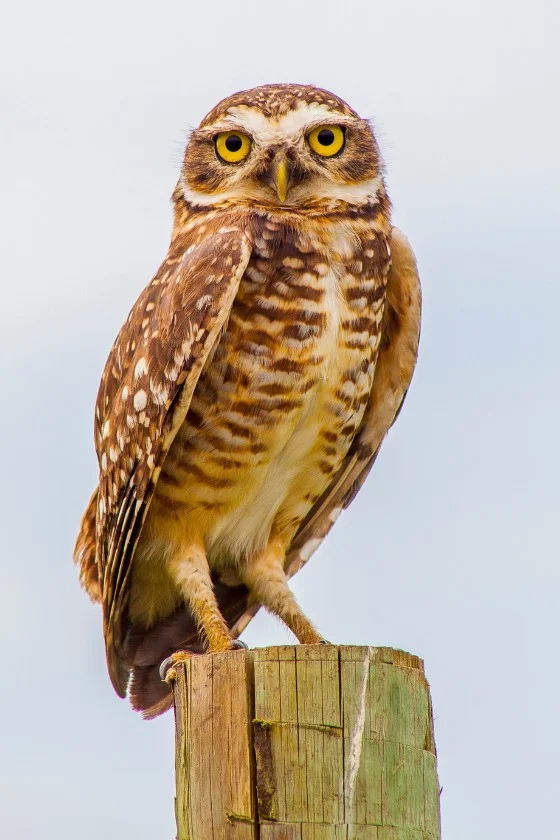
- Scientific name: Athene cunicularia
- Length: 7 to 11 inches
- Weight: 5 to 9 pounds
- Wingspan: 20 to 24 inches
The burrowing owl was given this name because it lives in burrows, usually those abandoned by squirrels and other animals.
It has long legs and can sprint, which serves well in its habitat of grasslands, wetlands, deserts, and other open areas. It is a native of North and South America but can be hard to track down in Georgia.
It generally occurs in the state between October and April, which is the best time you can find one. Look out for a bird with mottled brown feathers and yellow eyes.
Its wings, backs, and tails are a combination of sandy tan and white. The beak is of medium length and can either be yellow or grey.
The burrowing owl can be active during the day, though it prefers to hunt during dusk and dawn. It goes after small mammals, insects, and reptiles. Another name for the burrowing owl is shoco.
2. Short-eared Owl
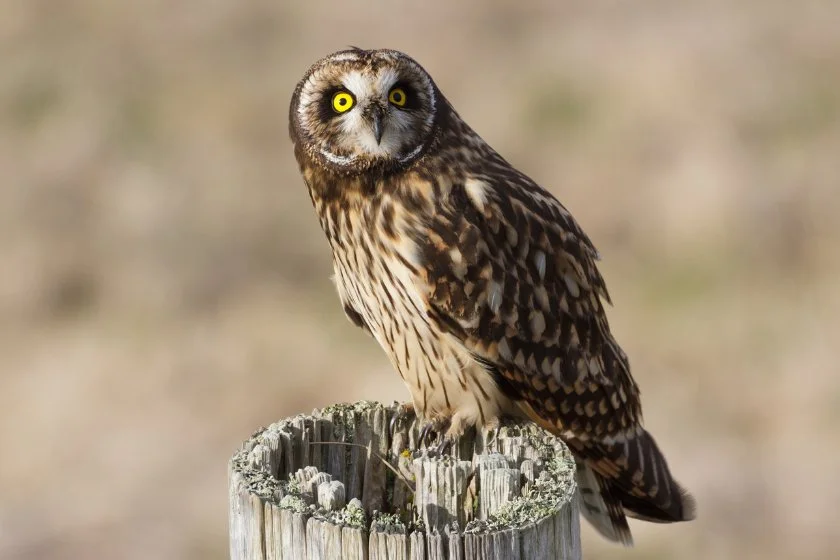
- Scientific name: Asio flammeus
- Length: 14 to 17 inches
- Weight: 7 to 17 pounds
- Wingspan: 34 to 41 inches
The short-eared owl belongs to the Asio genus, one that’s known for having feather tufts on the head that seems like ears.
This species’ feather tuft is very short and almost hard to see, hence its name. It is usually found in open fields and grasslands.
This bird is widely distributed, and it can be found in all continents except Antarctica and Australia. In the state of Georgia, it occurs between November and April.
Besides the rather short feather tufts, you can recognize the short-eared owl with other physical traits like large eyes, a big head, a short neck, and an equally short beak that’s colored black.
It is sometimes migratory and often moves to an area with a lot of rodents, its main meal. Besides those, it also feeds on other small mammals like bats. It eats birds too.
3. Long-eared Owl

- Scientific name: Asio otus
- Length: 14 to 16 inches
- Weight: 8 to 15 pounds
- Wingspan: 36 to 40 inches
The long-eared owl is also known as the northern long-eared owl or the lesser horned owl. Some people also call it the cat owl because of its looks.
It can be found in places like Europe and North America. In Georgia, it is usually found during the winter. The long-eared owl is a relative of the short-eared owl, and its feather tufts are long.
Other physical traits of the long-eared owl include a slim body, long wings, a black bill, and eyes that vary from yellowish-orange to orange-red.
Its coloration is generally grey and tawny, but there are a lot more combinations in areas like the lower parts.
Similar to its relative, this bird prefers open habitats where dense shrubs and trees can be found. It is usually silent except during mating season, when it uses some sound to attract a potential mate.
4. Northern saw-whet Owl
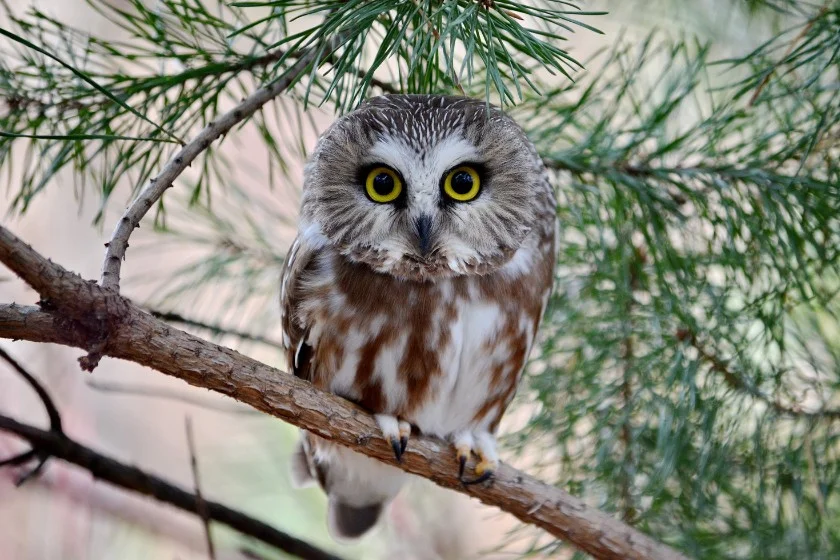
- Scientific name: Aegolius acadius
- Length: 7 to 9 inches
- Weight: 2 to 5 pounds
- Wingspan: 17 to 22 inches
The northern saw-whet owl is a native of North America and is considered one of the smallest species on the continent.1
It usually occurs in Georgia between November and February, and after then, it is uncommon. The bird is migratory, and there is no noticeable pattern.
In size, it can be compared to a robin. You can hold this owl in the palm of your hand. Females tend to be larger than males, but that’s to be expected with owls and many other birds of prey.
Its face is round and white, with streaks of brown and cream. Other physical traits include yellow eyes and a dark beak.
The saw-whet owl makes a distinct sound that accounts for its name.
Rather than the standard hoot often expected of owls, the saw-whet makes a sound that’s likened to a saw being sharpened on a whetstone. This bird feeds on small mammals and is prey to some other birds.
5. Great-horned Owl

- Scientific name: Bubo virginianus
- Length: 18 to 25 inches
- Weight: 32 to 88 pounds
- Wingspan: 40 to 57 inches
The great horned owl is the most distributed true owl in the Americas, which it is a native of. It can easily adapt to any habitat, and in Georgia, it is common.
It can be found throughout the year in different areas of Georgia. Some of its habitats are deciduous woodlands, tundra, and deserts. You can even see it around the city.
The great horned owl is also called the hoot owl or the tiger owl. It is the second heaviest in North America after the snowy owl.2 When most people think of a classic owl, they often think of the great horned.
It is colored a mottled brown on the upper parts and wings. The lower parts are a lighter color, and altogether this helps the owl in hunting. Completing this is a large head and broad wings.
Similar to other owls, this bird is nocturnal. It can go after big prey like hawks, ducks, and geese. It also hunts rats, mice, and rabbits. It is an apex predator around its range.
6. Snowy Owl
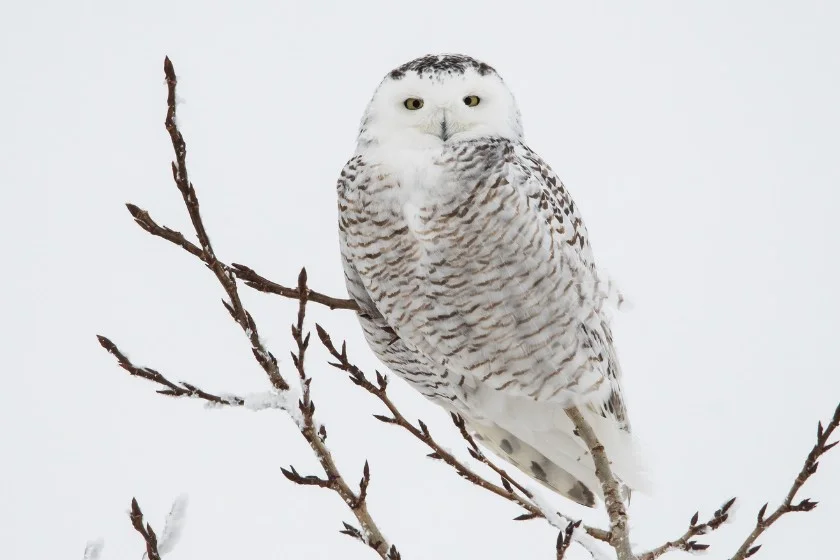
- Scientific name: Bubo scandiacus
- Length: 21 to 28 inches
- Weight: 56 to 104 pounds
- Wingspan: 50 to 57 inches
The snowy owl is a nomadic bird that isn’t easily seen in Georgia and any other state. The only period you can see the snowy owl is between December and February.
This bird isn’t hard to miss because of its striking white color with a streak of black. It is also large, making it easy to recognize once you can spot it.
If the bird is very white, there’s a high chance it is a male. Females tend to have spots, a clear difference between both genders.
Their faces are also white and round, with round wingtips and a medium-length tail. Additional features to recognize snowy owls are yellow eyes and black bills.
The snowy owl is a native of the Artic region, and it goes by other names like the polar owl, the white owl, and the Arctic owl.
It can be active during the day, and it is a formidable hunter that can adapt to any prey during its breeding season.
7. Eastern Screech Owl

- Scientific name: Megascops asio
- Length: 6 to 10 inches
- Weight: 4 to 9 pounds
- Wingspan: 19 to 24 inches
The eastern screech owl can be found a lot around the eastern parts of North America, typically in Canada and Mexico.
It is small and hard to detect due to its size and nocturnal lifestyle. Its preferred habitats are woodlands and any area where water can be found. In Georgia, it can be found all year round.
This bird has visible ear tufts, yellow eyes, and an equally yellow beak. It also has powerful feet with feathers going down to the toes.
The tail is short, and overall it is a stocky creature. There are two color variations: the “red or rufous morph” and the “gray morph”.
Regardless of its name, the eastern screech owl doesn’t screech. It makes a tremolo sound that’s sometimes compared to the whinnying of a horse.3
It is a carnivore, feeding on small mammals and insects like beetles, crickets, grasshoppers, and moths.
8. Barred Owl
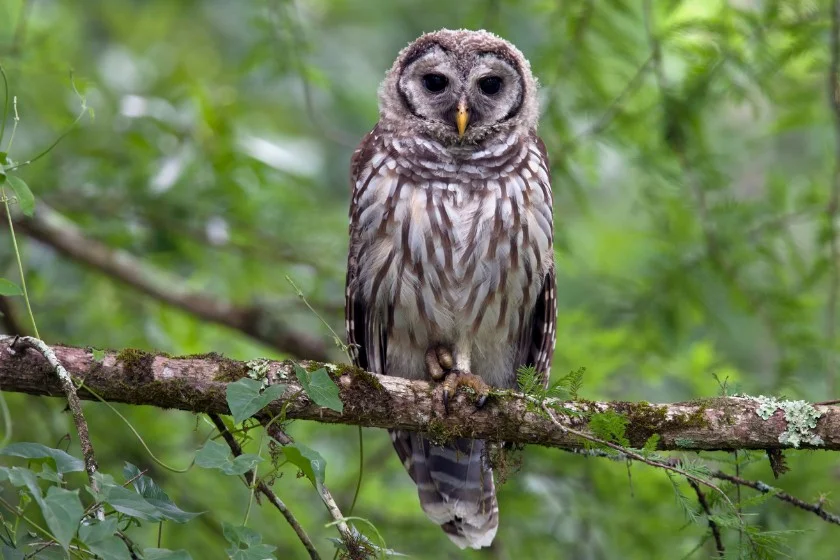
- Scientific name: Strix varia
- Length: 17 to 20 inches
- Weight: 16 to 37 pounds
- Wingspan: 39 to 43 inches
The barred owl goes by other names like the northern barred owl, the hoot owl, and the striped owl.
It is a native of the eastern side of North America but can currently be found in the western parts where it is considered invasive. In Georgia, the barred owl stays in the coastal plains.
The back, wings, and round tail are colored brown/greyish brown and white. True to its name, the bird is barred on the upper parts. The lower part is light. It has no ear tufts and a fairly large head.
The barred owl doesn’t limit itself to one prey but gets its nutrients from different animals like snakes, bats, birds, rabbits, and many others.
It is an opportunistic hunter, so it doesn’t seem to have any preferred diet. It is highly nocturnal and begins its activities after sunset. It sleeps during the day.
9. Barn Owl
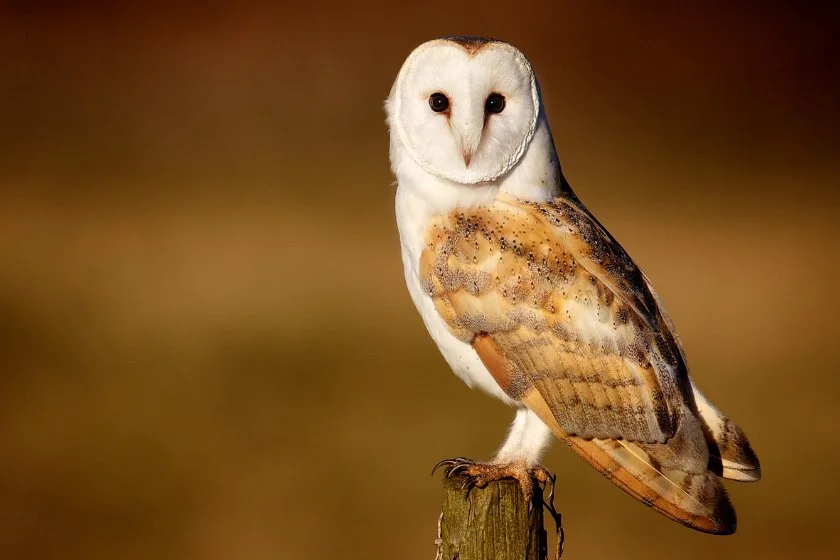
- Scientific name: Tyto Alba
- Length: 13 to 16 inches
- Weight: 14 to 25 pounds
- Wingspan: 40 to 50 inches
The barn owl is the most widespread owl on earth and one of the most widespread birds.
It is also one of the few owls that can live close to humans, and it can be found everywhere except the polar regions, areas like Indonesia, and the pacific islands.
There are three major lineages: the western, eastern, and American. The latter is what you’ll see in Georgia. It has a heart-shaped face, long wings, and a short tail.
It doesn’t hoot, even though that’s the sound most people would expect to hear from a barn owl. It shrieks in an almost eerie way.
The barn owl is so named because it inhabits barns and other abandoned buildings. Because of its widespread nature and unusual looks, it is often feared.
It is nocturnal except in Great Britain and some Pacific islands, where it hunts by day. It feeds on rabbits, mice, and rats.
Additional Tips on Owling in Georgia
The first step to begin owling in Georgia is to research the range, habitat, and annual cycle of the species in question.
You should also study the behavior of the species, especially if it is diurnal, crepuscular, or nocturnal.
This would be key to knowing when to seek the owl. Most owl species are nocturnal, but a few are either diurnal or crepuscular.
Nocturnal birds usually come out at dusk and hunt till dawn, so you can see some before full nightfall.
Another good time to see owls is under the moonlight when the natural light can easily show the flying creature.
Another behavior to look out for is migration. Some species can be found in Georgia all year, while others (like the Snowy owl) only appear at certain times a year.
Places you can find owls in Georgia include wildlife sanctuaries and even close to human dwellings.
Conclusion
The different species of owls in Georgia can be a delight to see and observe in their habitat.
To find a particular species, you should familiarize yourself with the bird’s behavior, habitats, and how long it remains in the state.
You can either go owling at night or during the morning hours, depending on the species you want to see.
Next up…
References & Notes
- Northern Saw-Whet Owl. Owl Research Institute.
- Great Horned Owl. Wikipedia.
- Tremolo Definition & Meaning. Merriam-Webster
